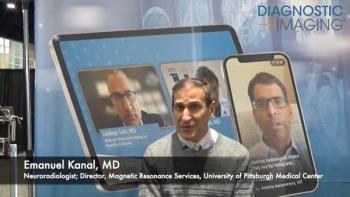
Interest costs add to Swissray loss
A big jump in sales for the year didn't help digital x-ray developer Swissray International, which posted a large net loss for its 1998 fiscal year (end-June). The New York City-based company indicated that it sustained a net loss of $22.5 million for
A big jump in sales for the year didn't help digital x-ray developer Swissray International, which posted a large net loss for its 1998 fiscal year (end-June). The New York City-based company indicated that it sustained a net loss of $22.5 million for the year, compared with a $13.7 million net loss in 1997. Swissray's 1998 sales were $22.9 million, compared with $13.2 million the previous year.
Swissray attributed its net loss to an increase in interest expenses resulting from convertible debentures issued for financing reasons. The firm also incurred significant expenses for its ddR Multi-System product and spent R&D cash for Tahoma TMSSM, a new healthcare asset management software offering.
The company's 74% increase in net sales was in part due to Swissray's purchase of Empower and Service Support Group. Empower was later sold to E.M. Parker. Swissray also enjoyed rising sales under its Philips OEM agreement, and the company sold four ddR Multi-Systems during fiscal year 1998.
The financial results released in December were part of the company's 10-K filing, the submission of which had been delayed by the company. In October, the NASDAQ stock exchange cited the company's failure to file its year-end results on time as part of the reason it was delisted. Swissray executives claimed that the firm's delay was due to the hiring of a new accountant firm, PricewaterhouseCoopers, and the time required to prepare the report (SCAN 11/11/98).
Newsletter
Stay at the forefront of radiology with the Diagnostic Imaging newsletter, delivering the latest news, clinical insights, and imaging advancements for today’s radiologists.




























